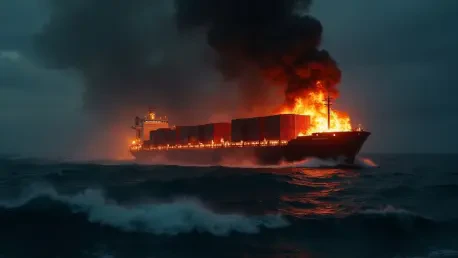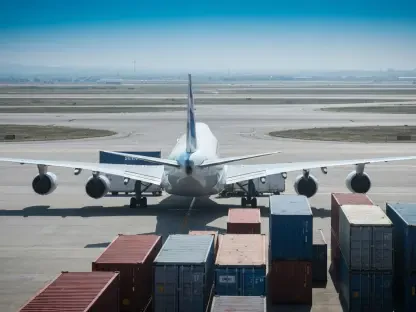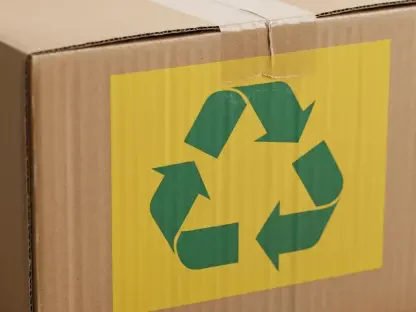In recent years, the increasing prevalence of cargo fires has prompted serious discussions about their impact on global shipping safety. The frequency and scale of these incidents have raised alarms in the maritime industry, which is at the forefront of transporting goods across the seas. Tales of catastrophic fires on cargo ships, fueled by reactive and hazardous materials, have captured attention, propelling stakeholders to scrutinize current practices and regulations. The issue is particularly pertinent given the sheer volume of goods traversed daily and the potentially devastating consequences of a major incident. As the shipping industry grapples with this burgeoning threat, experts underscore the need for comprehensive safety measures to mitigate risks and ensure the safe passage of maritime freight.
The Hidden Dangers of Reactive Cargo
Certain cargoes pose unique fire risks due to their inherent properties, often exacerbated by improper handling or storage conditions. Calcium hypochlorite, utilized widely as a disinfectant, is notorious for its rapid decomposition under high temperatures, which can lead to fires. When contaminated, this chemical becomes even more volatile, posing significant hazards during maritime transport. Likewise, charcoal, commonly treated with accelerants, is undergoing regulatory scrutiny. The shipping of charcoal requires meticulous oversight to prevent fires from accidental ignition. Regulatory measures are adapting to these challenges, emphasizing the necessity for stringent adherence to international codes and best practices.
Materials with a propensity to self-heat, such as cotton, wool, fishmeal, krill, and seed cake, present another dimension of risk. These commodities, when stored improperly or subjected to certain environmental conditions, can self-combust, creating fires that are difficult to contain. Their transport demands careful planning and execution, often involving specialized containers and temperature-control measures. This segment of the shipping industry must constantly adapt to evolving safety requirements, representing a dynamic challenge that calls for continuous improvement in safety protocols. Observers of the shipping world note these cargoes’ unpredictable nature as a critical area of concern, highlighting the complexities of managing fire risks in such diverse materials.
The Emerging Threat of Lithium-Ion Batteries
Lithium-ion batteries represent a modern and multifaceted threat to global shipping safety, given their widespread use and notorious propensity to catch fire. Unlike traditional cargoes, lithium-ion batteries introduce unique hazards, particularly as they age and degrade. These batteries can release flammable gases and ignite, leading to fires that are notoriously difficult to extinguish. Their inclusion in electronic devices and electric vehicles means they are transported ubiquitously, presenting a pervasive risk in the shipping arena. The industry must continuously update its handling and transportation protocols to account for these emerging threats, reflecting a need for technological adaptation and innovation.
Research continues to play a vital role in understanding and mitigating the dangers posed by lithium-ion batteries. Industry experts call for ongoing collaboration and investment in technology that can detect, manage, and suppress fires caused by these batteries effectively. Addressing these challenges involves not only regulatory compliance but also proactive approaches to safety management. Enhanced packaging standards, battery design improvements, and better detection systems are among the areas of focus to minimize the risks associated with transporting lithium-ion batteries. This issue resonates deeply amid a global shift toward sustainable energy solutions, which often rely heavily on battery storage and transport.
Strengthening Regulatory Frameworks and Safety Protocols
To navigate the complexities associated with cargo fires, the shipping industry invests heavily in bolstering regulatory frameworks and safety protocols. Compliance with the International Maritime Dangerous Goods (IMDG) Code and adherence to the Cargo Transport Unit (CTU) Code are central to ensuring cargo safety. These frameworks, alongside national regulations, provide comprehensive guidelines for managing dangerous goods, emphasizing risk assessment, proper labeling, and emergency preparedness. Such measures are instrumental in preventing fires and ensuring swift response should an incident occur. As the landscape of global shipping evolves, maintaining robust regulatory oversight remains a cornerstone of safe operations.
Enhancing safety protocols involves fostering a culture of vigilance and preparedness within the shipping ecosystem. Training programs aimed at educating personnel about hazard identification and emergency response are pivotal in reducing the likelihood and impact of cargo fires. Furthermore, leveraging technological advancements, such as real-time monitoring systems and fire suppression technologies, enhances the capacity to detect and address potential threats early on. These collaborative efforts illustrate a proactive stance in safeguarding maritime operations, underscoring the industry’s commitment to minimizing risk and promoting best practices. The effective integration of these strategies is crucial in adapting to dynamic challenges and reinforcing the resilience of the global shipping network.
Future Considerations and Essential Actions
Certain cargoes carry unique fire hazards due to their inherent qualities, often worsened by improper handling or storage conditions. Calcium hypochlorite, widely used as a disinfectant, is infamous for rapid decomposition at high temperatures, which can ignite fires. Contamination heightens its volatility, making maritime transport particularly risky. Charcoal, often treated with accelerants, faces regulatory scrutiny. Its shipment demands careful monitoring to prevent accidental fires. Regulatory adjustments highlight stringent adherence to international standards and best practices for safety.
Materials prone to self-heating, like cotton, wool, fishmeal, krill, and seed cake, amplify the complexity of fire risk. Improper storage or exposure to certain conditions can lead to self-combustion, causing challenging fires. Transporting these goods requires detailed planning, specialized containers, and temperature control. This segment of the shipping industry must continually adapt to evolving safety protocols. Critics view these cargoes as unpredictable, underscoring the complexity of managing diverse fire risks.









